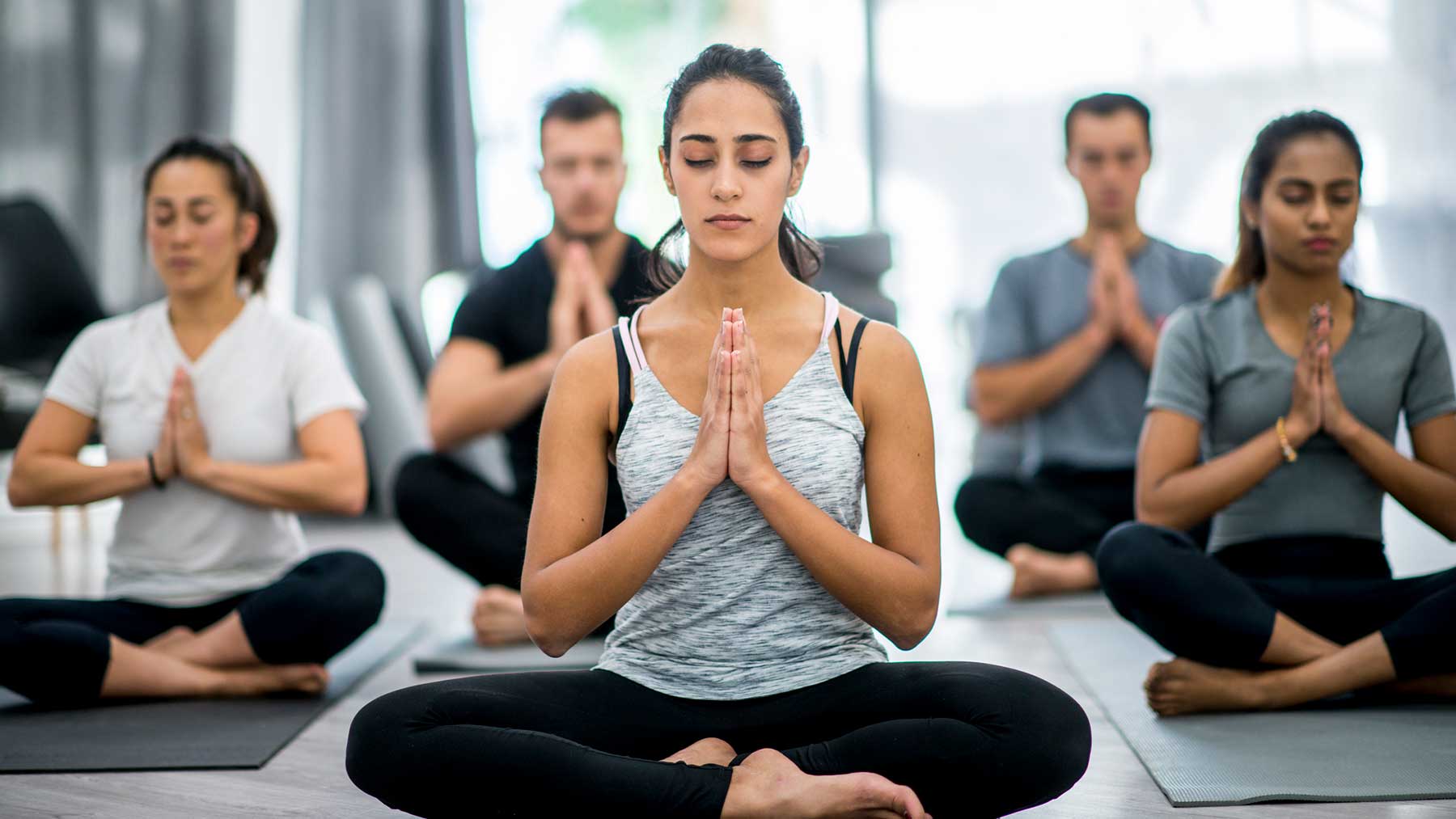Improving your whole self through meditation

Originating thousands of years ago in ancient India, meditation has long been practiced to aid in the discovery of wisdom, peace, spirituality and self-enlightenment. But today, as it is practiced more for its stress-relieving effects, the term ‘meditation’ is often confused with a similar, yet separate practice: mindfulness.
“Nowadays, the term ‘meditation’ is used to refer to many different techniques that bring about calmness, including focusing, concentrating, contemplating, observing and listening to relaxing music or nature sounds,” says Hari Sharma, MD, an Integrative Medicine specialist at the Ohio State Wexner Medical Center.
“Some of these techniques are difficult to do and further aggravate an already overactive mind.”
A technique like mindfulness is relaxing but still involves use of the mind, so a more accurate description of these is ‘relaxation techniques.’
“Relaxation is helpful for reducing stress and promoting health, but should not be confused with the deep experience of meditation that results in a wide array of benefits for health and well-being,” Dr. Sharma says.
So what really is the difference between meditation and other relaxation techniques like mindfulness? Dr. Sharma has the answer to that and other common meditation questions.
1. What is meditation?
Common thinking of meditation is of sitting in a quiet place focusing on breathing. Dr. Sharma says that the practice of meditation is actually much simpler and less controlled than that.
“The type of meditation that originated in the ancient times of India is an easy and effortless process that takes you beyond the mind, to the source of the mind deep inside,” he says. “It does not involve concentration, focus or any type of control or manipulation of the mind.”
According to Dr. Sharma, the mind is a collection of thoughts that continue to flow freely, except during deep sleep.
“Thoughts are moving and give direction to our lives,” he says. “Anything that moves needs energy, and anything that gives direction to life needs intelligence and creativity. Thus, we have a source of energy and intelligence deep within us.”
This area deep within us is peaceful and blissful. We experience this peace and bliss in deep sleep, when the mind is at rest and not active. This is why you wake up feeling rested and rejuvenated when you’ve had a good night’s sleep.
2. What is the difference between meditation and mindfulness?
Vedic meditation is an effortless process that doesn’t require you to try to control your mind. The brain waves that are predominant in this type of meditation are alpha waves, which are associated with deep relaxation.On the other hand, mindfulness practices generally involve a certain degree of control of the mind. One practice involves keeping attention on the breath and bringing the attention back to the breath if it strays.
“Mindfulness practices function on the level of the mind and do not go to the deeper levels that are beyond the mind,” Dr. Sharma explains. “As such, they do not access that area deep within us that is full of peace, bliss, energy, intelligence and creativity.”
According to Dr. Sharma, theta and gamma brain waves are predominant during these practices, which are associated with monitoring inner processes, focus and concentration. These brain waves, however, are not associated with deep relaxation.
“Being mindful in all aspects of your life – thoughts, speech, action, use of senses – is beneficial,” Dr. Sharma says. “But with time, this type of awareness starts happening automatically when you practice Vedic meditation.”
3. What is the best way to meditate?
Dr. Sharma recommends meditation be done twice a day for twenty minutes, before breakfast and prior to dinner:
Morning meditation prepares us to be energetic and efficient in the day ahead.
Evening meditation relieves the stresses of the day and prepares us for a relaxing evening.
The easiest and best way to meditate is to learn from an experienced and trained instructor.
“The natural tendency of the mind is to go to an area of increasing charm and bliss, which is deep inside us,” Dr. Sharma says. “So meditation is not difficult when learned from a trained instructor.”
The effects of meditation can be immediate, and accumulate the more it is practiced.
“Once you properly learn the technique, you are able to do it on your own and can utilize it for the rest of your life,” Dr. Sharma says.
4. What are the health benefits of meditation?
When we connect with our deep inner source of peace through meditation – according to Dr. Sharma – we will experience better health and wellness on many different levels: physical, mental, emotional and spiritual.
Health benefits of meditation:
- Decreases inflammation and reduces stress
- Normalizes blood pressure
- Reduces anxiety and depression (helpful for post-traumatic stress disorder) and improves sleep
- Improves brain function, as demonstrated by an EEG test, by synchronizing the functions of both sides of the brain and increasing its neuroplasticity, which improves learning and memory
- Increases levels of the hormone DHEA (dehydroepiandrosterone), associated with increased longevity and youthfulness
- Improves chronic disorders such as asthma, epilepsy, hypertension, heart disease, autoimmune disease, fibromyalgia and chronic pain, premenstrual syndrome and menopausal symptoms
“Meditation quiets the fluctuations of the mind and takes you to a higher level of consciousness,” Dr. Sharma says. “Your creativity and intelligence increase, your intuition increases and you become more sensitive and discerning. You experience a sense of connectedness, or unity, with everything and everyone around you.”




